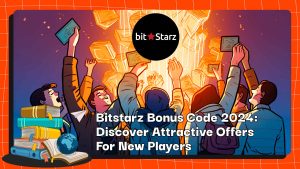Blur Has A Great Start, How To Defeat OpenSea Next?
Key Points:
- Blur’s speed advantage is one of the things that helps the platform grow.
- Airdrop is also a tactic that gives the NFT marketplace an edge over OpenSea.
- In addition, the project also needs to improve its future strategies as well as avoid competition with OpenSea’s $SEA tokens.
BLUR is finally here. This is the new governance token of the NFT marketplace Blur, which was previously sky-dropped to users of the platform.
The anticipation of this airdrop, tallied in three gamification phases, rewarding trades, listings, and bids, has greatly increased Blur’s profile and helped it become a true rival to long-time NFT market giant OpenSea.
However, airdrops alone do not make OpenSea a competitor. The noise and momentum from the airdrop is temporary and will only go so far.
Take NFT marketplaces LooksRare and X2Y2 as examples, both of which launched LOOKS and X2Y2 token incentives early last year. As you can see in the price comparison chart below, both tokens had a lot of excitement at their initial launches and have since dropped considerably in price. Both tokens have failed to capture significant market share from OpenSea over time. Of course, their stories are still being told, but apparently they’re not as exciting or alluring now as they used to be.
Therefore, the launch of government tokens is a strategy to achieve decentralized governance coordination and a strategy to seize market share from OpenSea and other competitors. However, most of the effects of this latter tactic are likely to be temporary and have been reacted to by the market around the time $BLUR launched.
So, what’s the good news for the NFT marketplace? It does have an attractive UX, which makes it a legitimate challenger to. OpenSea in a real sense, beyond token economics.
For example, Blur aggregates NFT listings from all major NFT marketplaces, including Seaport Protocol from OpenSea, so that the NFT marketplace is no longer subject to OpenSea’s marketplace blocklist. In contrast, currently OpenSea only aggregates projects from above Seaport, such as ENS Vision and Sound.
Plus, the listings refresh quickly, setting itself apart from the competition with real-time listings and instant NFT metadata display. According to Blur, its marketplace is 10 times faster and nearly 20% more gas efficient than Gem, OpenSea’s NFT aggregator for sophisticated traders.
Abundant options, impressive speed, and a smooth user experience — these are the pillars on which the NFT marketplace aims to gain a foothold and gain more market share through it. But the question is, over time, will the rollout of these pillars and $BLUR be enough to really overtake OpenSea?
What is certain is that more work will be needed if Blur is to achieve a comeback against OpenSea’s already dominant position.
Launched in December 2017, OpenSea has been at the forefront for many years and has become the juggernaut of the NFT ecosystem, accumulating an unparalleled depth of experience and resources along the way.
Where OpenSea currently parallels it is in NFT volume levels, where the NFT marketplace has been neck and neck with the incumbent giant (OpenSea) for weeks now.
This phenomenon is very impressive, but it is also heavily influenced by $BLUR expectations, whose tactical effects we have noted will ultimately be temporary.
If Blur is going to truly win the war on the NFT market, it will need to continue meaningfully advancing and building on its UX pillars and the launch of $BLUR. That’s easier said than done, right, so what should this rising star do?
In order to become the next NFT market champion, the NFT marketplace needs to have the following five things.
Protection moat
Blur’s speed advantage is real, its Gas efficiency is very high, and its Bid system is very flexible. Of course, these are Blur’s unique moats right now.
As long as they’re exclusive to Blur, those moats will only be moats. But if other competitors catch up on these fronts (which is possible), those moats for the NFT marketplace will evaporate.
For Blur to win, it needs to be faster, more efficient, and more agile. Again, this is all easier said than done, and there isn’t necessarily an immediate answer, but no matter what: the moat must be defended.
That said, 65% of Blur’s early users came from OpenSea and Gem, so if Blur can secure its moat, those users may switch forever.
As a Gem admirer, I can say that right now, I find the user experience of Blur and Gem to be pretty average. There’s something I like better about Blur, and something I like better about Gem, and I really like both.
Keep rewarding
Blur’s gamified airdrop was an influential strategy that until now has helped the market keep pace with OpenSea in terms of NFT volume levels.
That counts as a tactical victory, but the NFT marketplace needs to keep cascading more tactical victories in order to succeed, even if the effect is only temporary each time. It looks like Blur has taken that lesson to heart.
Since the airdrop, they launched the “Second Season” $BLUR rewards, which will double all Bid and Listing Points on the market for the next month. A seasonal approach makes a lot of sense here.
Advance plan
For the NFT marketplace to continue moving forward, it must continue to evolve and innovate.
A stagnation, for whatever reason, against champions OpenSea would certainly cost Blur a window of opportunity.
For example, maybe the NFT marketplace could end up trying to beat OpenSea by bringing an optimized professional trading user experience to all the top L2 chains by centralizing it.
We will wait and see. But ultimately it’s up to the Blur team to prioritize what they think is best, and execute and innovate around those plans in a deft manner.
Stay motivated
There is no doubt that Blur is at a disadvantage in this game. OpenSea’s capabilities, resources, and active users are enormous.
The NFT marketplace team won’t be able to beat OpenSea if they let the elements against them get to their heads. Sometimes the underdog wins, sometimes it’s the indomitable fighting spirit – the desire to “we’ll win” that, over time, makes the difference to the lying incumbent.
Pray no $SEA tokens
Half of any fight is what the other side does. In other words, the NFT marketplace can keep its $BLUR rewards liquid and continue to roll out one cool feature after another, but it’s hard to guarantee it won’t be beaten by OpenSea.
In fact, many believe it is a foregone conclusion that OpenSea will never launch its own token. That may well be the case. But imagine if they did airdrop $SEA to users? This would be a landmark move that could further cement OpenSea’s dominance for years to come.
After all, wouldn’t OpenSea defeat Blur by attacking the four points above? Cannibalizing Blur’s UX moat, rolling out its own rewards, advancing its own plans and fighting spirit? Even, OpenSea may end up not needing $SEA to beat the NFT marketplace for a while.
Correspondingly, for the Blur team, it may be more than just getting everything right. It could also be like chess, to have the ability to execute their plans, while also hoping that OpenSea makes a bad judgment call!
DISCLAIMER: The Information on this website is provided as general market commentary and does not constitute investment advice. We encourage you to do your research before investing.
Join us to keep track of news: https://linktr.ee/coincu
Harold
Coincu News


























